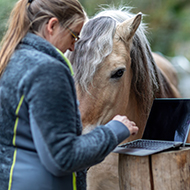Welsh government adjusts bovine TB testing rules
Around 10,000 cattle are slaughtered each year in Wales because of bovine TB.
The Welsh government has adjusted its rules around bovine TB testing in Wales after meeting with farmers.
In TB incidents, there will no longer be routine testing of calves younger than 42 days old unless the TB risk from these animals is considered high.
Routine surveillance testing in Approved Finishing Units (AFUs), or Licensed Finishing Units, is ceasing, unless the risk is considered high. Slaughterhouse post-mortem surveillance will still provide protection to the food chain.
Default skin testing of a herd, following slaughterhouse suspicion alone, will no longer be a requirement. A herd check test will no longer needed if the sample from the suspect animal identified at inspection in a slaughterhouse is negative on laboratory testing.
However, if the slaughterhouse sample test result is positive, the herd will be marked forward for a further test 60 days after the animal left the herd. This test will count as the first breakdown test.
Tracing tests will continue to be used to reduce the risk of TB spread through movements of cattle from TB breakdown herds. However, data analysis of trace tests, currently supports a move away from trace testing of all cattle moved in low risk situations. The Animal and Plant Health Agency (APHA) will continue to assess the requirement for these types of tests.
Huw Irranca-Davies, cabinet secretary for climate change and rural affairs, said: “Since my appointment in March, I have made a point of meeting farmers, vets and others across the industry to listen to their concerns around TB and the burden and anxieties these can cause.
“I’m pleased to be able to announce today that further changes - which have been made in response to industry feedback - are now in place.”
Image © Shutterstock



 With Strangles Awareness Week just around the corner (5-11 May), vets are being encouraged to share a survey about the disease with their horse-owning clients.
With Strangles Awareness Week just around the corner (5-11 May), vets are being encouraged to share a survey about the disease with their horse-owning clients.